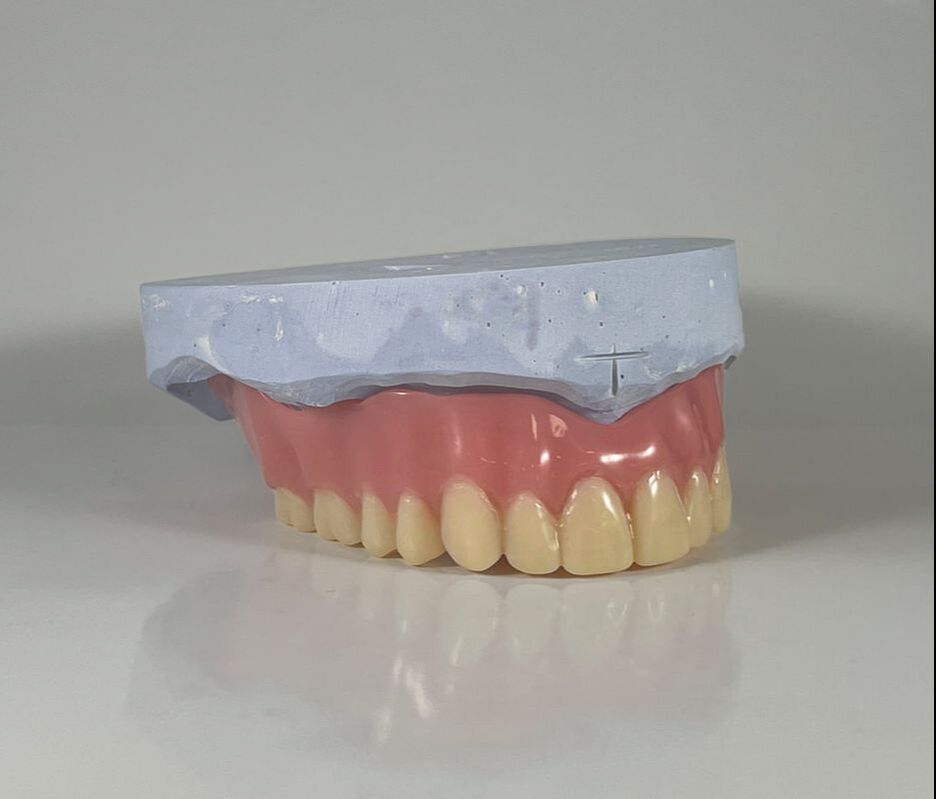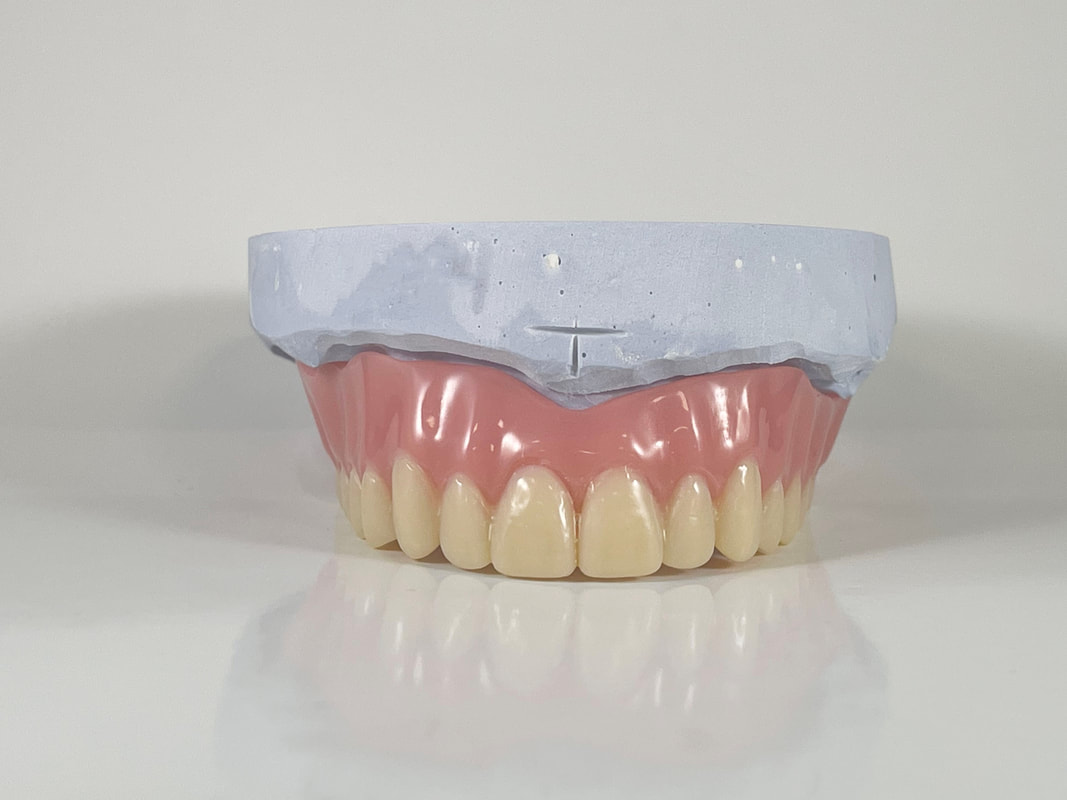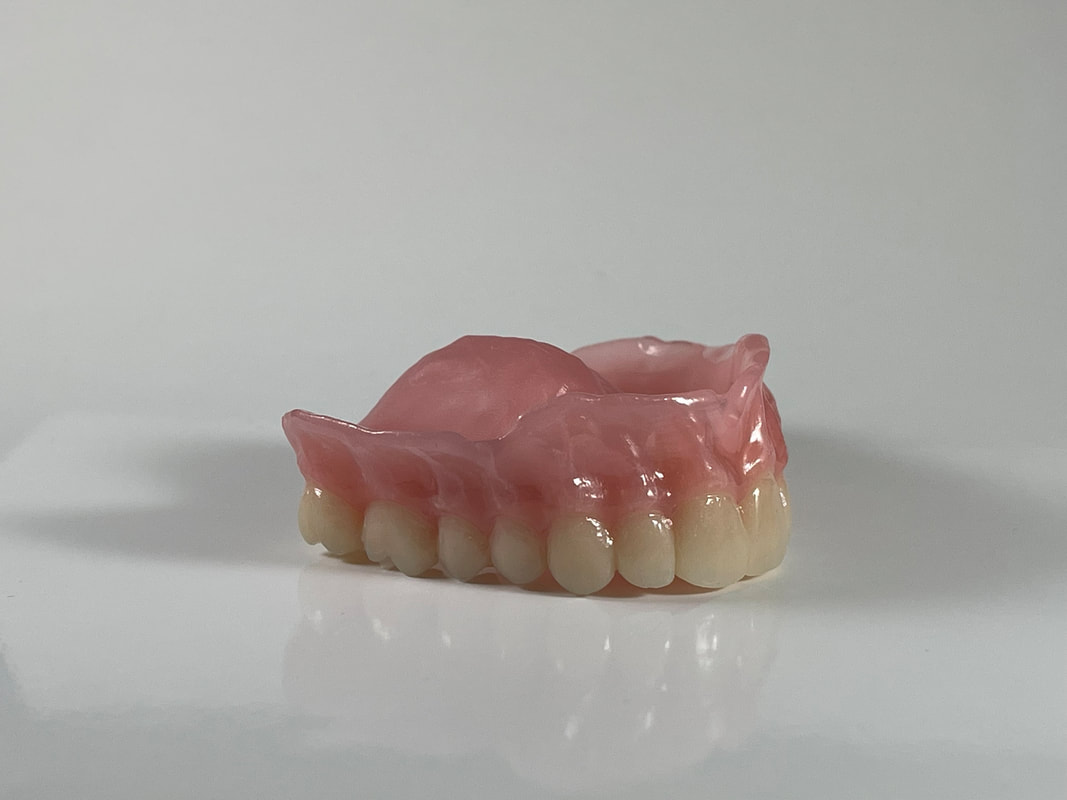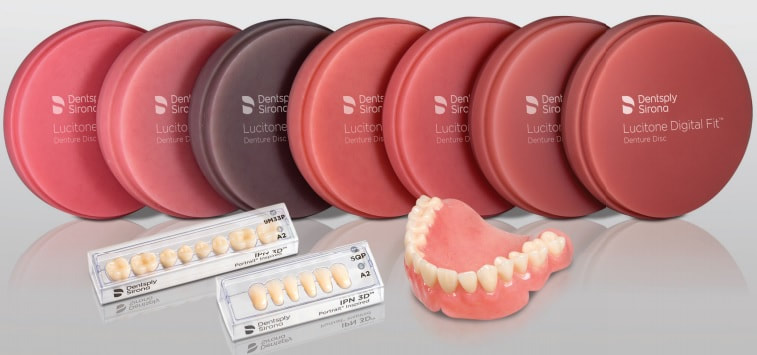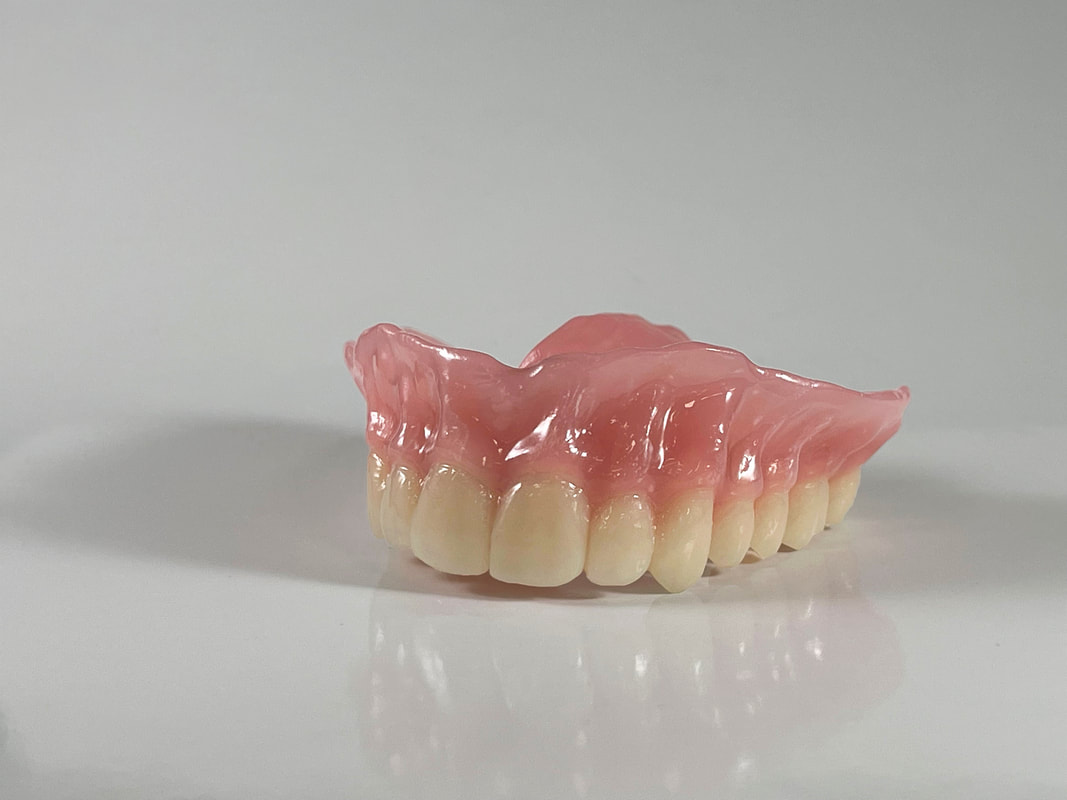Who is Jimmy Stegall?Jimmy Stegall is a Procedural Solutions Specialist at Dentsply Sirona. He holds over 40 years of clinical experience as well as a long history of teaching and training dentists, students, and technicians. Jimmy recently partnered with The Dental Lab to host, “Next Level Dentures in 3 Appointments,” a webinar discussing what digital dentures offer and how they’ve improved dentistry. Trends in DenturesCommon among both dentists and patients is that they do not like traditional impressions and bite techniques, try-in appointments, or having to make adjustments. The traditional denture process is often timely and can lead to manual mistakes. Taking impressions and bites takes a lot of time and many attempts to get it right. Scanning certain areas of the mouth can be difficult, specifically the soft ridge. According to Jimmy, there are no schools in the United States that teach or promote scanning of the soft ridge because it is simply not viable. Furthermore, try-in appointments are disliked because there are often more than five per patient in order to get a good and comfortable fit. Typically by the eighth appointment, patients are frustrated and ask, “Why does it take so many appointments? Why can’t you get it right the first time?” The answer is simply because making restorations the traditional way is hard and having follow-up appointments is necessary for each adjustment. Manually, it is almost impossible to get the right fit without making adjustments. Improvements in DenturesThe biggest problems when it comes to creating dental prostheses are a lack of data and time. In the webinar, Jimmy referenced Doctor Gunnar E. Carlsson’s, “Critical review of some dogmas in prosthodontics.” Within his studies, Carlsson evaluated over 350 research projects on denture fabrication to determine the most effective and best practices when working with prosthodontics. The study concluded that in order to make dentures successfully is a transition of mindset: a digital dentures workflow. Summary points:
The mindset transition necessary requires the physician to engage and communicate more effectively with the patient. Dentists must start talking and listening to their patients' needs and wants. More importantly, they need to start asking better questions in order to collect better data. How the patient feels is the determining factor for denture success. The most essential questions regard the fit, color, size, and position of the dentures. Do they feel good in the mouth? Are they comfortable? Should the color be lighter or darker? Do they need to be bigger or smaller? Do they need to be shifted up, down, left, or right? In addition, Jimmy explained the shortage of dental lab technicians in today's world, with only 1.8 graduating dentists per 100 thousand of the population. He said that there are currently less than 6,000 dental labs in the United States, and the biggest problem that labs face is staffing. However, 40 percent of our population is denture age, and every day over 10 thousand people turn 65. There are approximately 20 million denture users in the United States today, and in 10 to 12 years, there will be 200 million. We simply do not have enough graduating dentists and technicians to cover the entire population and their increasing demand for dentures. Moreover, many physicians and patients are struggling with the lengthiness of the entire manufacturing and fitting denture process. The most prominent problems with traditional teeth set in wax are that they often end up in a long drawn-out try-in loop with the patient. This reduces the chance of patient satisfaction and can adversely affect business. Traditional milling typically takes about 3 hours with 30 minutes for one arch of setting teeth, another 40 to do the wax around the teeth, and another hour to set. Fortunately, advancements in technology have provided a solution to decrease the time needed for both processes to help dentists and labs catch up to the high demand for dentures with digital dentures. Digital is proven to increase efficiency and scalability. How Do Digital Dentures Work?Digital dentures are created through design software and 3D printers virtually and require fewer appointments to achieve perfectly fitting prostheses. Dental labs are equipped with scanners that analyze impressions and bites. From the computer software, technicians are able to create an almost perfect custom fit. Any adjustments needed can also be corrected on the computer. Furthermore, because they are not built by hand, but printed instead, the fabrication process runs much more quickly as there’s no room for human error. 3d printers also do not account for the time it takes to gather the materials, bond them together, or paint them. The materials are already within the system. The prostheses are printed as one piece so there’s no need to bond them. Lastly, the software allows the technician to pick the colors and print them in those colors. The initial material used to create digital dentures was called Generation 1 Resin. This material was fragile, broke easily, and resulted in an artificial-looking denture. However, Lucitone Digital Print Generation 2 Resin emerged soon after. Lucitone’s resin was highly advanced and resulted in an accurate print with aesthetics and strength unlike any other. Available in four shades – original, original opaque, light reddish pink, and dark reddish pink–this is a polymer resin way stronger than anything we’ve ever had in the industry. To prove this, Jimmy shared videos of both generations of resins undergoing different durability tests, such as being dropped on the floor, run over by a car, and squeezed in between a hydraulic press. The Generation 1 Resin did not withstand any of these tests, but the Generation 2 resin survived all. For more support, Jimmy explained the high-impact quality of the Lucitone material. High-impact materials are government-tested and do not break before 900 joules per meter squared. Conventional dentures break at 1000 joules per meter squared. On the other hand, the current industry’s current method and product of choice for digital denture fabrication exceeds high-impact standards and has over twice the strength of regular acrylic. Generation 2 Resin-made dentures were found to have a breaking point of 1,500 right out of curing by Boston University. They also found that at mouth temperature of 93 to 98 degrees Fahrenheit, the prostheses double in strength. However, the drawback of this material was the coloring was slightly off. Patients want a natural-looking smile that has the reflection and refraction qualities of real teeth. The question for dental labs was, “How are we gonna print teeth in a bottle of resin and get transparency, translucency, and color variation?” With this problem came the emergence of Lucitone Digital Value Tooth Resin. This is the current standard for digital denture resin. It has the same durability and strength as the original Lucitone resin, but the latest product also results in interpenetrating polymer network (IPN) aesthetics, a high-quality, life-like set of teeth. Benefits of Digital DenturesThere are many benefits of digital dentures including having a digital record on file, computer-aided design and computer-aided manufacturing (CAD-CAM), a reduced number of appointments and steps, fewer post-insertion adjustment visits, increased consistency and strength, and a better overall patient experience. The advantage of having a digital record on file is that it can easily be altered as often as necessary. The CAD-CAM system allows technicians to virtually create a digital denture design. They can make changes or revert to previous versions quickly and efficiently. Also since they can be quickly fabricated, this results in the need for fewer steps. It takes about 20 minutes to customize the dentures online and 40 to print. Additionally, the software is more accurate when it comes to fitting because there’s no room for mishandling. This results in the need for fewer follow-up appointments with the patients and an overall better experience. Digital Dental Lab Near MeThe Dental Lab is one of the leading denture labs in the country. We specialize in 3D-printing dentures and dental digital services. With our expedited shipping services, we can deliver all over the nation in just a few days, making us a denture laboratory near you wherever you are. The Dental Lab in Bristol, Pennsylvania is a full-service dental lab with over 35 years of business. We are a leading lab in America that provides 3D-printed dentures. We have been a partner of Dentsply Lucitone products for multiple years and are proud to provide the highest quality dentures to our physicians, dentists, oral surgeons, and their patients. If you have any questions or would like to learn more about our products and services, please do not hesitate to contact us. Our technicians are always available and willing to speak. Sources: Critical review of some dogmas in prosthodontics 3D Printed Dentures: Lucitone Digital Print Denture System Evaluation of the bond strength of various denture teeth materials to conventional, CAD/CAM, and 3D printed denture bases Keywords:
Digital dental lab, dental lab near me, denture labs, 3d printing dentures, dentures and dental, digital dentures, denture laboratory near me, 3d printed dentures, ivoclar, impressions, bites, the dental lab, jimmy stegall, resin, 3d print, technology, healthcare, oral health, oral surgeon, patients, milling, cad-cam, dentistry, digital dental, digital dentistry, dentures
6 Comments
2/4/2023 09:24:44 am
Reply
4/6/2023 12:40:35 pm
It has the same durability and strength as the original Lucitone resin, but the latest product also results in interpenetrating polymer network aesthetics, a high-quality, I’m so thankful for your helpful post!
Reply
6/7/2023 06:22:46 am
Next-Level Dentures is a helpful blog post from The Dental Lab that discusses high-tech denture solutions. The newest innovations in denture technology, including implant-supported and digital dentures, are discussed in this post. The article highlights the advantages of these cutting-edge denture solutions, such as enhanced stability, comfort, and aesthetics. The content is well-organized and detailed, making it a valuable resource for anybody curious about contemporary denture alternatives.
Reply
3/13/2024 09:29:00 am
I thoroughly enjoyed reading your latest blog post, as it of insightful thoughts and captivating stories. Your distinct writing approach, skillfully incorporating humor, detailed imagery, and creative comparisons, made the subject come alive for me as if I were embarking on an exciting journey alongside you. I am excitedly anticipating your upcoming blog post and will be on the lookout for it.
Reply
Leave a Reply. |
